Built – ?
Type – Wehrmacht, purpose unclear
Original name – Estorff Kaserne
History – ?
Updated 24 July 2024
Home to:
HQ 4th Line of Communication Sub Area arrived from Netherlands 17 Jun 45 – moved to Potsdam-Babelsberg west of Berlin 1 Jul 45 – HQ British Troops Berlin
More to follow
Source: 21st Army Group later British Army of the Rhine to Mar 49
Part II
11 Armd Div Post Office, RE ?- 1952-1954-?

WW2 Era looking towards the Guard Room.
I was posted to H Troop, 2 Squadron, 11 Armoured Divisional Signals Regiment in about January 1955 having done my Basic Training at 7 Training Regiment, Catterick followed by about four weeks at 4 Training Regiment on the Potential Officers’ course (from which I opted out) and then 6 months Trade Training to be a Radio Mechanic at 1 Training Regiment. Our Troop provided Radio and telephone communications for The Royal Artillery HQ (don’t remember their designation) and when I was demobbed, the Brigade Major came and shook me by the hand and thanked me for keeping the radios operational. We had a variety of wireless sets including 19 sets, 22 sets and 52 sets and at the end I had two other mechanics in the workshop. Our block was opposite the YWCA building where we used to go for breaks, in preference to the NAAFI.
I had been a member of both the Combined Cadet Force and then the Army Cadet Force and so I was pretty “service-wise” when I was called up for National Service on 1st July 1956.
When I got to Hammersmith Barracks, Herford I was pleasantly surprised by the triple glazing, the general heating and the provision of endless volumes of hot water – a big change from those awful “spiders” at Catterick! It was also a pleasant surprise to be allocated a room sharing with only one other soldier and I soon settled in to a life of comparative ease.
The biggest problem was lack of money; some of our meagre pay had to be taken in BAFVs which could only be used inside the camp – i.e. the NAAFI. This left little cash for going out on the town but somehow we managed, mainly by selling non-smokers’ cigarette rations to the MSO personnel. These were displaced persons from Eastern Bloc countries who had been put into uniform and paid a pittance to perform menial tasks in the barracks. They had their own accommodation and messing blocks and it was forbidden to fraternise with them. I got to know a very cultured man from Latvia who had been a lawyer before the war and (in addition to selling him cigarettes) I taught him basic English.
At that time, the Commanding Officer was Colonel North, my Squadron OC was Captain Anderson and my Troop Commander was Lt. Smith. I was nominally part of the crew of H1, a 22 ton Armoured Command Vehicle (nicknamed “pigs” because of their strange snouted shape) in which we slept when on manoeuvres, and damn cold it was in those German winters. Sometimes we slept in hay barns but I stopped this when I awoke one night and saw the gigantic rats that live there; after this I tried to get in the farm kitchen where there was a stove. At least I fared better than the soldier on guard duty who disobeyed the order to “keep moving” and consequently froze to death where he had sat down and fallen asleep.
I perfected my German while I was in Herford and met a very nice German girl; we used to frequent a pub slightly out of town called the Restaurant zur Schönen Aussicht where I made friends with the owner, Herr Walter Restel who has sadly recently died.
Although I was a National Serviceman I thoroughly enjoyed my time in Herford and was genuinely sorry to leave in July 1956. By this time our designation had changed to 4 Infantry Division Signals Regiment.
Paul M Dunkley
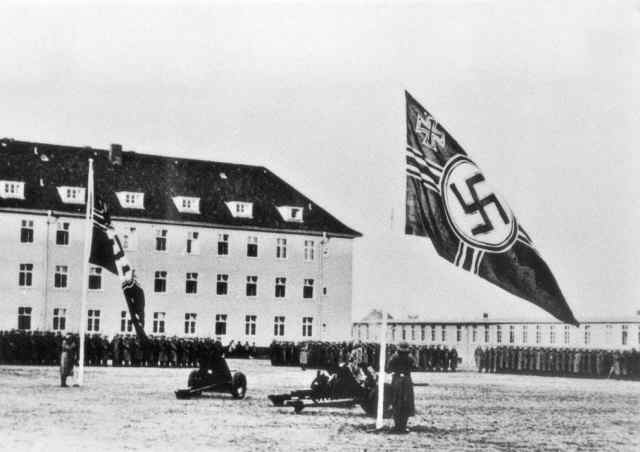
This picture here shows the regiment represented by the stone below, displaying the German 8.8cm 43/41 PAK (Panzer Abwehr Kanone). 7 November 1935
Courtesy of Camhorse
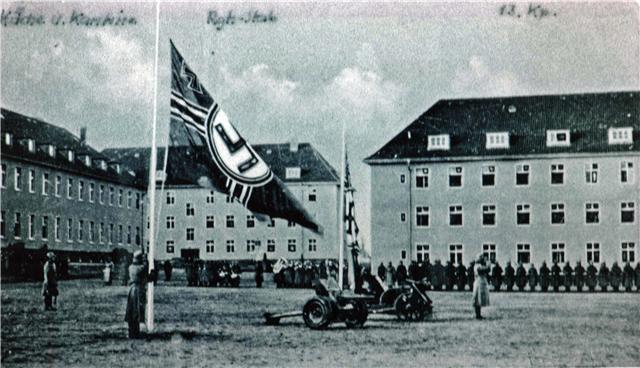
This picture taken at a slightly different angle had some handwriting at the bottom which shows the date very clearly as 7 November 1935. (Feierliche Hissung der Reichskriegsflagge am 7 November 1935 an der Kaserne in Herford, Wothoestr)
Courtesy of Camhorse
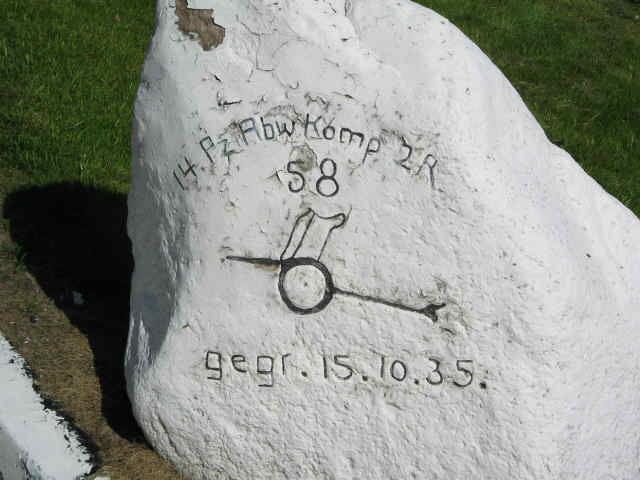
14 Panzer Abwehr Kompanie, Infantry Regiment No. 58, gegründet 15.10.35.
15th Armoured Defence Company, 58th Regiment, Founded 15 October 1935.
This commemorative stone sits just beside the clock tower in Hammersmith Barracks. There are further commemorative plaques in the park area behind the Officers’ Mess and should feature soon.
Camhorse
The stables in Hammersmith seem to be intact, less a fire a couple of years ago. The troughs inside are still there as are a lot of the original stalls. There were also what seemed to be stalls on a second storey, with holes in the ceiling to drop hay down. This is still in full use in the riding school. As I said, this seems to be largely as it was, with original painting of uniformed mounted riders around the walls. Also, in the chapel there is a little history of the chapel. Originally it was stables too, but then became a place for POWs.
Camhorse
.jpg)
Clock View, 1947
.bmp)
Vehicle Park – date unknown.

Hammersmith Barracks – circa 1955.
Courtesy of Brian The Tank
.jpg)
Hammersmith and Wentworth Barracks as can be seen from the air – circa 1955
Courtesy of Brian The Tank
.jpg)
HQ 4 Division – 1966
Courtesy of Brian The Tank
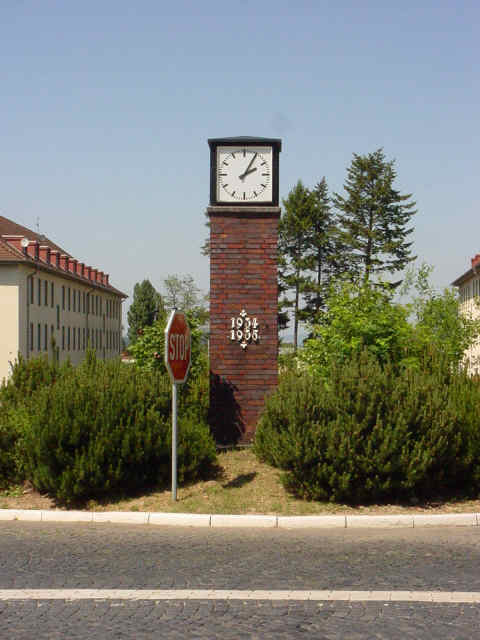
The clock at Hammersmith does still work and is set from the guardroom. The annoyance is it can only be set by forwarding the hands clockwise through all the hours until the desired one is met.
Note the figures 1943-1935 which denotes the building of the barracks.
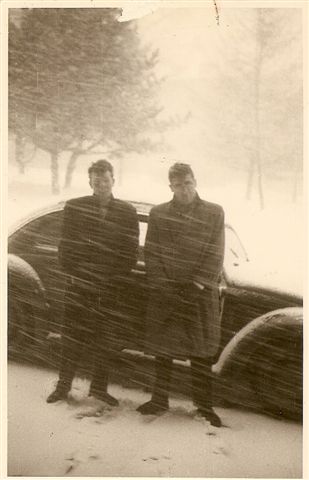
Above shows photograph taken of Cfn (Taff) Williams and Cfn Cliff Butler taken outside Block 5 of Hammersmith Barracks, on the same day as the Manchester United football team (Busby babes) plane crashed on Munich runway in 1958. The photograph shows how severe the snow storm was that day – the snow flakes were as big as half-crowns in old money.
Courtesy of John
